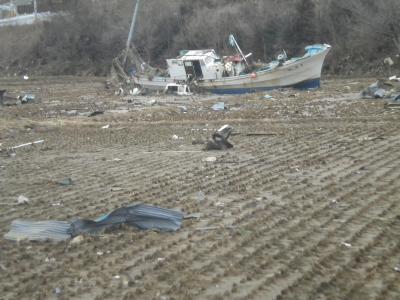
Here is a report we have received from Ms. Nahoko Harada.
Ms. Harada volunteered with TMAT in Kesennuma, one of the most devastated areas, to serve those who required medical attention.
Please click “Read More” to see her report and an English translation.
3月11日に宮城県沖で発生した東北関東大震災発生を受け、米・ボストンで臨床医をしている医師3名とともにTMATの一員として被災地で活動したご報告をさせていただきたいと思います。
3月13日にボストンを出発し成田へ、そのまま救急車にて仙台徳洲会病院に到着、翌14日より18日まで気仙沼市の階上(はしがみ)中学校の仮設診療所にて、1200人(そこに非難されている方+徒歩でいらっしゃる方+往診)のケアをさせていただきました。
3月18日現在の状況としては、階上地区はライフラインは復旧しておりません。軽油での発電機で電気は確保できています。水はタンクからのものを使用しています。洗濯は被災者の方は近所の川へ行っていました。ガスは通っていません。食料やその他の救援物資は、自衛隊や赤十字から届いており、また元々半自給自足だった土地で有ることが幸いして、最低限確保できていました。
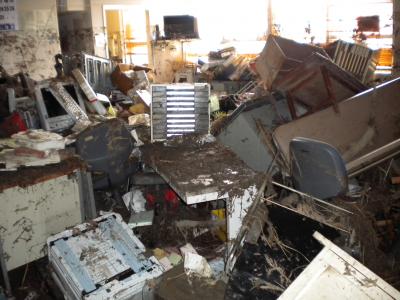
家が倒壊していない方達も家での生活が不可能なので、食糧の配給をもらいに学校にいらしている方が多いです。もともと、下水が整備されていない地区なので、不幸中の幸いで、トイレは自宅のいわゆる”ぼっとん”トイレを使うことができています。火はカセットコンロを使って煮炊きを個人でされている方もいます。
健康問題としては
・慢性期の患者さんの継続投薬:かなりの数の病院が機能を回復しつつあります。ただし血圧治療薬、抗凝固薬、インスリンなどどうしても継続しないといけない薬に限ってのみ継続処方という状況になっています。
・小児科:子供の受診希望が多くあり、今後小児科を診られる医師、NP、PAが必要になってくると思われます。
・その他:インフルエンザ、長期避難生活による疲労、ストレス、倒壊した家屋などの撤去作業に起因する怪我や精神的な問題も起きてくると予想されます。
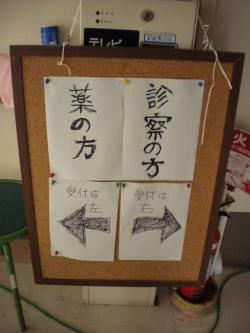
ニュースの多くは悲惨な状況を伝えていると思います。
それも事実ですが、私が実際、気仙沼の被災者の方達と触れて感じたのは、多くの人がコミュニティの力を最大限に活用し、助け合い、避難所の中で新しい”町”を作ろうとしていることです。都市と異なり、近所付き合いのまだ強い地域であることが幸いしたのでしょうか。
家庭科調理室でおば様方が食事を作り、中高生が力仕事をし、お年を召した方が小さなお子さんの面倒をみているのを見ると、人のしなやかさ、逞しさを改めて実感しました。

支援は長期に渡ることが明確であり、今後交代で現地での医療活動を継続するために医療者は不足しています。
人を搬送するにも、その為の人員、救急搬送車、ガソリンが必要なので、TMATとしては、今後はチーム(ロジスティクス、看護師、医師から編成されます) を作り、チームを交代することによって活動を継続していくとのことです。1チームの現地滞在期間は4日ほどになるとのことでした。これは、人を関東から運ぶにも、運ぶ車両、燃料、運転手2人が必要なので効率化を図るためだそうです。また、長期支援になるので、できるだけ効率的にチームを作ってメンバーが疲弊しないうちに交代して、必要なら同じ人を再投入したいということです。
After hearing the news about the March 11th earthquake off the coast of Miyagi Prefecture, I joined 3 Boston physicians to form a TMAT team and traveled to the disaster site. This is a report of our relief activities at the site.
On March 13th, we departed from Boston for Narita, and took an ambulance directly to Sendai Tokushu Hospital. From March 14th to 18th, we helped provide care for 1200 people at a temporary clinic at Hashigami Junior High School in Kesennuma. We served patients who had evacuated to the junior high, as well as those who came to the clinic by foot. We have also made house calls.
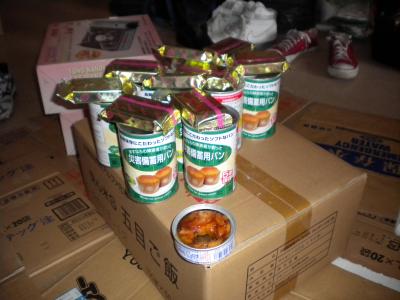
As of today, March 18th, essential utilities have not been restored in Hashigami District. We have been able to maintain electrical power using gas powered generators. For water, we are using a supply from a tank. Victims have been going to a nearby river to do laundry. There is no gas supply. The Self Defense Force and the Red Cross have been sending food and other relief supplies. Luckily, this region was already partially self-sufficient when we arrived, so basic needs have been met.
Many people come to the school to collect food rations because their houses have been destroyed and it is impossible for them to live there. One silver lining we have noticed in the midst of the disaster is that this area did not have a sewer system prior to the earthquake, and therefore people have been able to continue to use “botton” toilets in their homes. Some people have also been able to cook food for their families using gas burners.
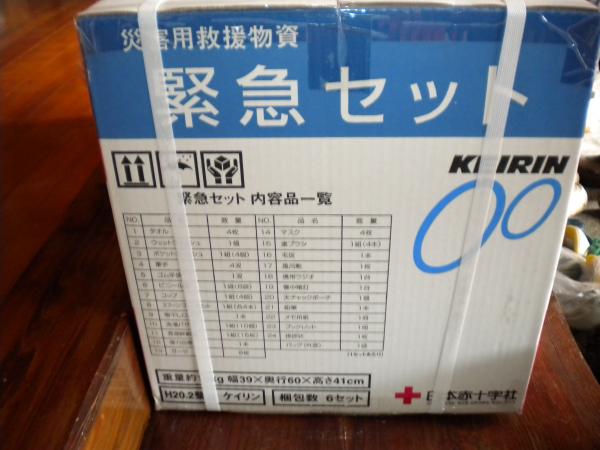
The main health problems here are:
- Continuing to provide medicine for patients with chronic diseases: Many local hospitals are beginning to function again. However, they are only able to prescribe medications which cannot be discontinued under any circumstances, such as anti-hypertensives, anticoagulants, and insulin.
- Pediatrics: Since many people wish their children to be examined, I think there will continue to be a high demand for pediatric physicians, nurse practitioners and physician assistants.
- Other: We anticipate that the people here will encounter other problems, including influenza, fatigue from staying in shelters for extended periods, stress, and injuries and psychiatric distress from removing damaged homes.
I am sure that the news has covered the tragic conditions here, and this is the reality of the situation. However, while interacting with the people of Kesennuma, I have felt that most people here are drawing on the power of their community, helping each other, and making a new “town” for themselves inside the shelters. Unlike big cities, people in this region have strong bonds with their neighbors, and this seems to have been a great blessing.
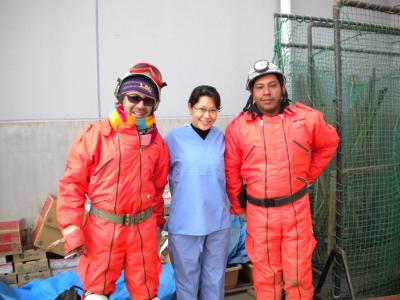
When I saw women making food in the home economics classroom, junior high school students helping with manual labor, and the elderly watching small children, I was impressed by their resiliency and strength.
It is clear that the relief efforts will take a long time, and there will not be enough outside medical staff to take turns working at the site.
In order to transport people in need of medical care, manpower, ambulances, and gasoline will be necessary. Therefore, TMAT will continue to help by forming teams of logistics staff, nurses and physicians, and sending these teams in shifts to continue working in the area. Each team will spend 4 days at the site. TMAT has selected this duration to be as efficient as possible, since each time a team is dispatched from Kanto, they require a car, fuel, and two drivers. Since this is a long-term relief effort, TMAT wants to form teams as efficiently as possible, switch teams before team members become fatigued, and send the same team members to the site more than once if necessary.
Nahoko Harada, MSN, RN
